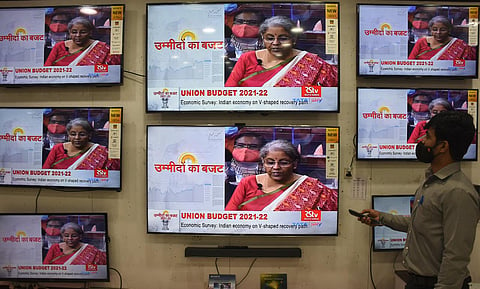

The Budgetary exercise is essentially a bureaucratic one framed in a political context. A carefully crafted act involving the whole Central government, mainly for items in the Union and concurrent lists of the Constitution, the Budget seeks to strike a balance between anticipated revenue and expenditure, between stark reality and pleasant visibility (read optics), between raising expectations and seeking to fulfil them. It reflects the resolve of the government while keeping regional aspirations, electoral compulsions as also demands of new policies and legislations in mind. The final product is put together by a team of astute bureaucrats under broad political supervision and the process is marked by prudence, solidity and credibility. But since civil servants are neither great innovators nor aspiring martyrs, the annual Budget often turns out to be rather predictable and lacking in punch, requiring a careful reading between the lines.
If the idea is to impress the public with a startling announcement, a substantial outlay may be shown against a scheme or sector that is not yet ripe or institutionally prepared to spend a large part of the allocation. For instance, if a huge sum is allocated for a major project in a backward area even before the detailed project report is finalised, obviously such an allocation will mainly be symbolic—good optics.It should be remembered that if the ruling party has enough numbers, passing a legislation or preparing a national policy—though important in themselves—is often easy to accomplish. Far more difficult is the phase of implementation. Hurriedly passed laws or quickly drafted policies may reflect the seriousness of government intentions but are likely to face major problems at the operational stage. For implementation to be meaningful, appropriate institutions and adequate financial resources are both equally important. After all, a government’s commitment to a cause can be measured by two indicators: the quantum of funds allocated against its requirement and whether the institutional architecture is in place, manned by the right kind of personnel.
While each aspect is being analysed threadbare by experts, lobbyists and individuals likely to be affected, let me just touch upon the two ministries dealing with education (from an expenditure perspective) and disinvestment/privatisation (from the revenue angle).
In the case of the former, the National Education Policy 2020 (NEP) was announced with much fanfare. Many progressive ideas were incorporated in it with the explicit admission of our poor record in public expenditure (not to speak of the dismal one in terms of per capita expenditure, especially in school education) and with a promise to raise it to 6% of GDP in the next few years. However, the economy being in a bad shape, none expected a substantial rise. But to have an allocation of Rs 93,224 crore, which even in absolute terms is much less than Rs 99,312 crore of 2020-21, was never anticipated. In 2020-21, the education sector had been virtually paralysed by the pandemic. Naturally, the utilisation of resources was poor. But that is not a valid reason to cut the outlay for 2021-22 substantially.
The ideas of setting up the regulatory architecture under new legislation, establishing a central university at Leh (hopefully without destroying the fragile ecosystem there), Eklavya schools in tribal areas, etc., are fine and would necessitate huge expenditure. Allocating a sum of Rs 50,000 crore to the National Research Foundation (NRF) over five years is also welcome, but it requires to be seen whether the NRF would be in a position to absorb such funding. But the NEP promises much more. Admittedly, much of public expenditure on education comes from the states. But if the Centre does not lead the way, its moral power to persuade the states to step up spending in this sector gets eroded. Thus, the deal for education is poor optics for it dimly lights up the NEP.
With regards to disinvestment and privatisation, the record so far has been far from encouraging. Year after year, the targets remain unrealised. The reasons are not difficult to fathom. Both within the government and without, it is widely acknowledged that the 3Cs—the CAG, CVC and CBI—have been adversely affecting the initiatives or risk-taking abilities of PSU managements. Therefore, to expect the officials in the Department of Investment and Public Asset Management, however honest and competent, to vigorously push the agenda of privatisation seems optimistic. None wants to be hauled up, years after their retirement, by investigating agencies and perhaps even courts for decisions taken in good faith. Despite amendments to the Prevention of Corruption Act and the appointment of Lokpal quite some time ago, the government does not appear to have succeeded in instilling the confidence that officials taking risks in decision-making will be protected from undue harassment and possible prosecution. In such a scenario, and based on past record, targeting to raise Rs 1.75 lakh crore may be good optics but appears far from realistic.
Fortunately, Budgetary figures are not cast in stone. The allocations can always be revised depending on various compelling factors as the months pass by. After a year ravaged by the pandemic, it is evident that many bold measures have been announced—especially on creation of physical infrastructure. The Budget is also more transparent, clearing up old dues and displaying a reformist agenda. With the pandemic waning and the economy slowly returning to normal, it would not be irrational to hope that allocation to social sectors like education will be enhanced in real terms in sync with the new education policy. Attempts to augment the human capital deserve a much higher priority.
Amitabha Bhattacharya
Former IAS officer who has also worked in the private sector and with the UNDP
(amitabha2110@gmail.com)